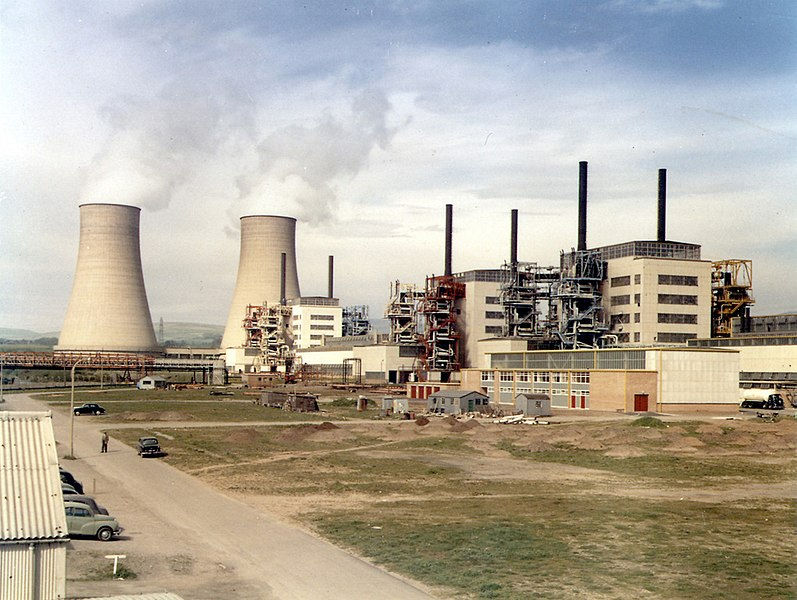How Green is your Christmas Tree?
- eastlintontoollibrary

- Dec 1, 2021
- 4 min read
While some revel in the scent of a real tree and the joy of picking one out at a local garden centre others prefer the simplicity of artificial trees they can reuse for Christmases to come.
But as consumers become more climate-conscious, many might be considering which tree has the lowest carbon footprint - a natural tree or a store-bought plastic tree?
It's complicated, experts say. CNN in the USA has recently explored this topic, as has the Soil Association and the Carbon Trust in the UK. "It's definitely a lot more nuanced and complex than you think," Andy Finton, the landscape conservation director and forest ecologist for the Nature Conservancy in Massachusetts, told CNN.
The case for artificial trees

It's easy to imagine that reusing an artificial tree year after year is the more sustainable option. But Finton says if an artificial tree is used for fewer than six years, the carbon cost is greater than investing in a natural tree, but achieving a total environmental balance may take up to 20 years.
That's because artificial trees are typically made of polyvinyl chloride plastic, or PVC. Plastic is petroleum-based and created at pollution-belching petrochemical facilities. Studies have also linked PVC to cancer and other public health and environmental risks.
Then there's the transportation aspect. Many artificial trees are imported into the UK from China, carried by fossil fuel-powered ships across the oceans, then moved by HGVs before each tree ultimately lands on the distributor's shelves or the consumer's doorstep.
The American Christmas Tree Association, a nonprofit that represents artificial tree manufacturers, commissioned WAP Sustainability Consulting in 2018 and found the environmental impact of an artificial tree is better than a real tree if you use the fake tree for at least five years.
"Artificial trees were looked at for factors such as manufacturing and overseas transportation," Jami Warner, executive director of ACTA, told CNN. "Planting, fertilising and watering were taken into account for real trees, which have an approximate field cultivation period of seven to eight years."
What are the benefits of real trees?

On average, it takes 10-12 years to grow a Christmas tree to the most popular height of 6 foot. And as it grows, it absorbs carbon dioxide from the air. Protecting forests and planting trees can help reduce the impact of the climate crisis by removing CO2 from the atmosphere.
If trees are cut down or burned, they can release the carbon they've been storing back into the atmosphere. But Doug Hundley, spokesperson for the National Christmas Tree Association, which advocates for real trees, says the act of cutting down Christmas trees by a commercial grower is balanced out when growers immediately plant more seedlings to replace them.
"When we harvest the trees or cut them, we plant back very quickly," Hundley said.
There's also an economic benefit to going natural, since most of the trees people end up getting are grown at nearby locations. "What we're doing by purchasing a natural Christmas tree is supporting local economies, local communities, local farmers and to me, that's a key part of the conservation equation," Finton said. "When a tree grower can reap economic benefits from their land, they're less likely to sell it for development and less likely to convert it to other uses."
Disposal matters

Trees pile up on the kerbside after the holidays are over and the final destination in many locations is landfill, where they contribute to emissions of methane — roughly 80 times more potent than CO2.
But nowadays many towns and cities repurpose the trees to benefit the climate and the environment by recycling or composting, where stored carbon is put back in the ground.
Finton also says former Christmas trees can be reused for habitat restoration; they can help control erosion if placed along stream and river banks, and can even help underwater habitats thrive if they are placed in rivers and lakes. I use mine as a bug hotel.
The end of life for an artificial tree is much different. They end up in landfill — where they could take hundreds of years to decompose — or incinerators, where they release hazardous chemicals.
The bottom line
According to the Carbon Trust, a 6 foot artificial tree has a carbon footprint of around 40kg, more than ten times that of a real tree that’s burned after Christmas. In other words, you’d need to re-use an artificial tree 10 times to negate its carbon footprint, yet it’s estimated that fake trees are only used for an average of 4 times.
Weighing the climate pros and cons, real Christmas trees have the edge. But if you choose to deck your halls artificially, get a tree you're going to love and reuse for many years.
Either way people should feel good about their decision and find other ways to tackle the climate crisis.
"It's a debate, but once you've made a decision, you should feel good about your decision, because there's so many other things we can do in our lives that have an even greater climate impact — such as driving less or advocating for policies that expand renewable energy," Finton said. "Enjoy the holidays and focus on other aspects of your life to reduce the impacts of climate change."
- By Sheila Durie








Comments